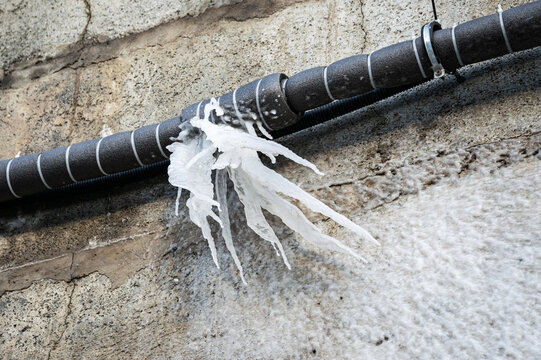Preventing Pipes from Freezing: Best Methods
Preventing Pipes from Freezing: Best Methods
Blog Article
They are making several great points relating to Winter Plumbing Precautions: Preventing Frozen Pipes as a whole in this post down below.

Winter can damage your plumbing, particularly by freezing pipelines. Right here's how to avoid it from happening and what to do if it does.
Introduction
As temperature levels decrease, the risk of icy pipes increases, potentially resulting in pricey repairs and water damage. Comprehending how to stop icy pipes is essential for home owners in chilly environments.
Understanding Frozen Pipes
What causes pipes to freeze?
Pipelines ice up when exposed to temperature levels below 32 ° F (0 ° C) for prolonged durations. As water inside the pipelines ices up, it increases, taxing the pipe walls and potentially causing them to burst.
Risks and damages
Frozen pipelines can lead to water supply disruptions, home damage, and pricey repairs. Ruptured pipes can flood homes and cause considerable architectural damage.
Signs of Frozen Water Lines
Identifying icy pipes early can prevent them from rupturing.
Exactly how to recognize frozen pipelines
Search for lowered water flow from taps, uncommon odors or noises from pipelines, and visible frost on subjected pipelines.
Prevention Tips
Insulating vulnerable pipes
Cover pipelines in insulation sleeves or make use of heat tape to safeguard them from freezing temperature levels. Concentrate on pipelines in unheated or exterior areas of the home.
Heating techniques
Keep interior spaces properly heated up, particularly locations with plumbing. Open closet doors to permit cozy air to distribute around pipes under sinks.
Safeguarding Outside Plumbing
Yard pipes and outside faucets
Separate and drain yard tubes before wintertime. Install frost-proof faucets or cover outdoor taps with protected caps.
What to Do If Your Pipelines Freeze
Immediate actions to take
If you believe icy pipelines, keep taps open to relieve pressure as the ice thaws. Use a hairdryer or towels taken in hot water to thaw pipes gradually.
Long-Term Solutions
Structural modifications
Consider rerouting pipes far from outside wall surfaces or unheated areas. Add added insulation to attic rooms, basements, and crawl spaces.
Updating insulation
Purchase high-quality insulation for pipes, attics, and walls. Correct insulation assists maintain consistent temperature levels and reduces the risk of frozen pipes.
Conclusion
Avoiding frozen pipelines needs proactive actions and fast responses. By understanding the reasons, indicators, and safety nets, house owners can safeguard their plumbing during winter.
5 Ways to Prevent Frozen Pipes
Drain Outdoor Faucets and Disconnect Hoses
First, close the shut-off valve that controls the flow of water in the pipe to your outdoor faucet. Then, head outside to disconnect and drain your hose and open the outdoor faucet to allow the water to completely drain out of the line. Turn off the faucet when done. Finally, head back to the shut-off valve and drain the remaining water inside the pipe into a bucket or container. Additionally, if you have a home irrigation system, you should consider hiring an expert to clear the system of water each year.
Insulate Pipes
One of the best and most cost-effective methods for preventing frozen water pipes is to wrap your pipes with insulation. This is especially important for areas in your home that aren’t exposed to heat, such as an attic. We suggest using foam sleeves, which can typically be found at your local hardware store.
Keep Heat Running at 65
Your pipes are located inside your walls, and the temperature there is much colder than the rest of the house. To prevent your pipes from freezing, The Insurance Information Institute suggests that you keep your home heated to at least 65 degrees, even when traveling. You may want to invest in smart devices that can keep an eye on the temperature in your home while you’re away.
Leave Water Dripping
Moving water — even a small trickle — can prevent ice from forming inside your pipes. When freezing temps are imminent, start a drip of water from all faucets that serve exposed pipes. Leaving a few faucets running will also help relieve pressure inside the pipes and help prevent a rupture if the water inside freezes.
Open Cupboard Doors
Warm your kitchen and bathroom pipes by opening cupboards and vanities. You should also leave your interior doors ajar to help warm air circulate evenly throughout your home.

I hope you enjoyed our piece on Preventing and dealing with frozen pipes. Thank you so much for taking time to browse our posting. Enjoyed our blog entry? Please quickly share it. Let others discover it. I praise you for being here. Don't forget to check our website back soon.
Get Started Report this page